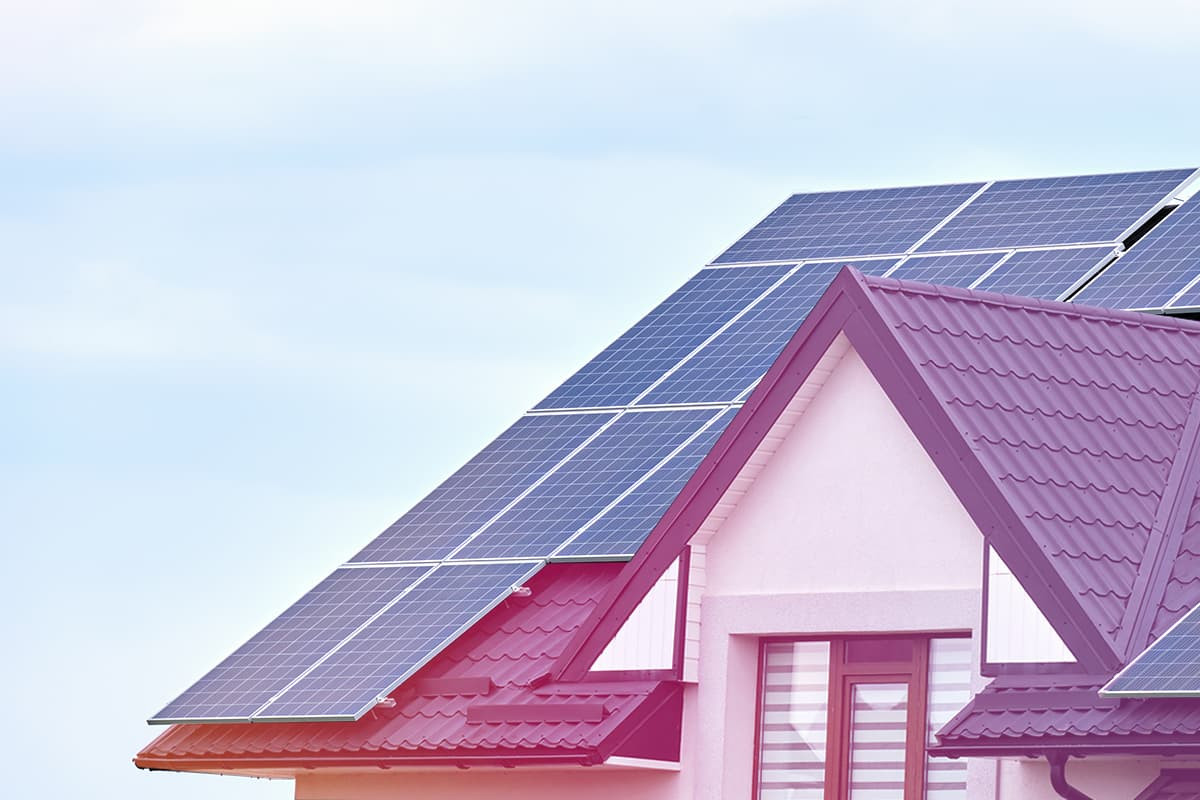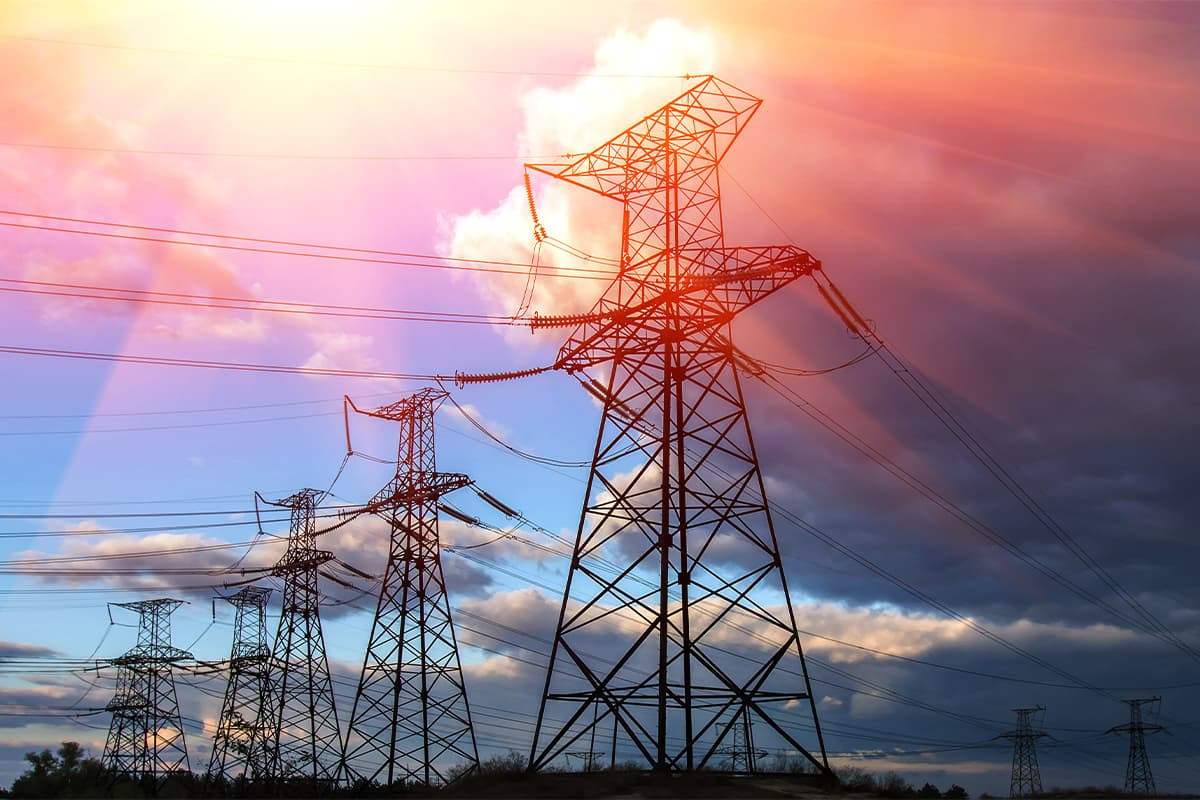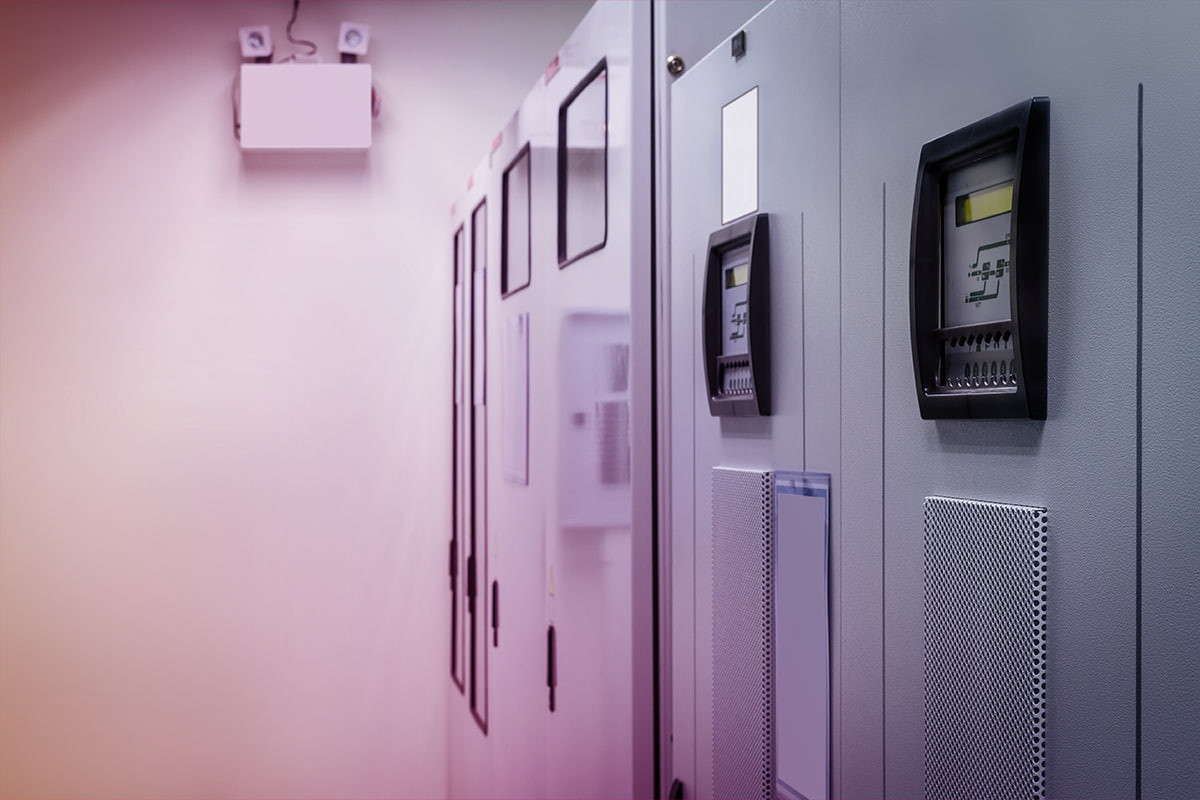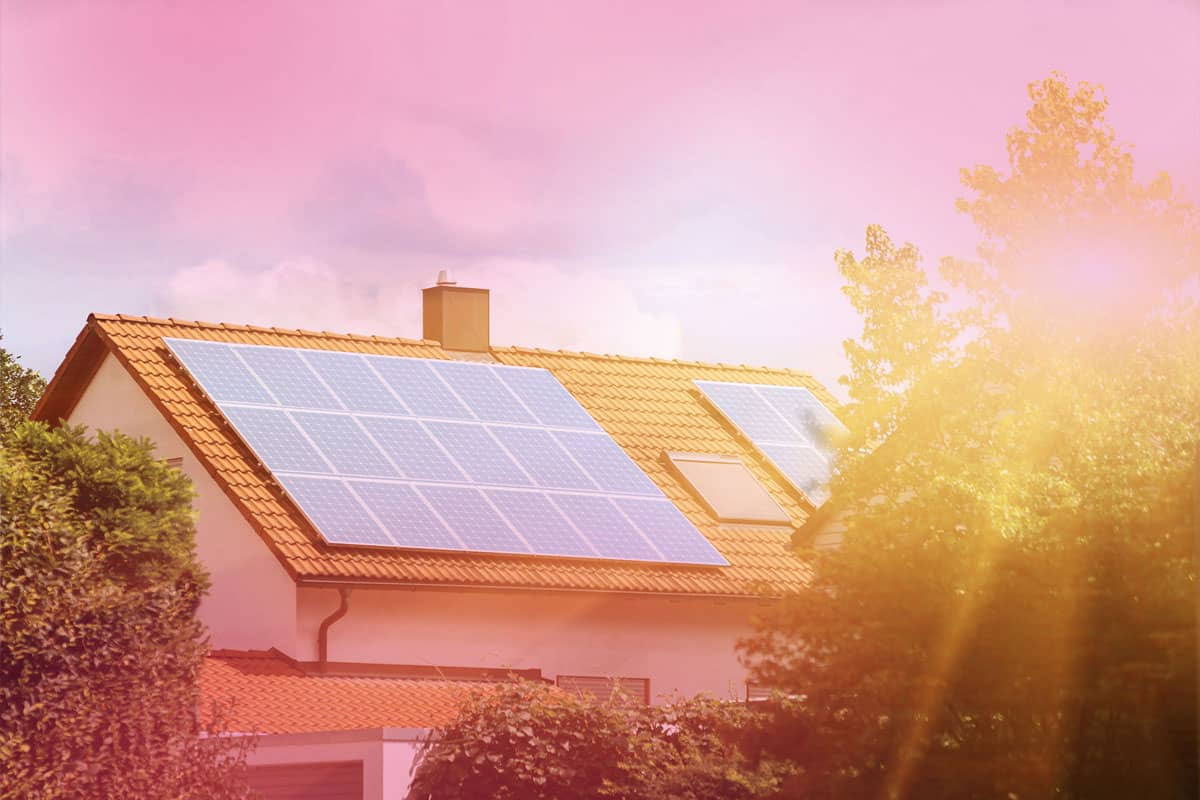
What is in this article?
Solar power is considered an environmentally friendly energy source, as it is renewable and completely sustainable. Solar panels are the most known part of the system that converts thermal energy and solar rays into energy.
Energy conversion with solar panel system although this technology has been known since the 19th century, it began to spread in the early 20th century with patents granted for various solar-powered devices. In this way, solar power, i.e. a recognized and very valuable source of energy for the environment, offers great benefits not only in devices, but also in homes, factories, facilities and various businesses thanks to panels becoming more sophisticated.
In the continuation of this blog you will learn everything you need to know about the photovoltaic system, which can greatly reduce the consumption of fossil resources and thus provide both financial and environmental benefits.
What is the Photovoltaic System (PV)?
 The photovoltaic system converts sunlight into electrical energy. Although the terms photovoltaic system and solar panel are often used interchangeably, they serve different purposes. Photovoltaic systems and solar collectors (solar panels) are systems that are confused with each other because they are installed on the roofs and on the ground level of buildings.
The photovoltaic system converts sunlight into electrical energy. Although the terms photovoltaic system and solar panel are often used interchangeably, they serve different purposes. Photovoltaic systems and solar collectors (solar panels) are systems that are confused with each other because they are installed on the roofs and on the ground level of buildings.
The thermal and radiant energy of the sun is stored for different purposes. While photovoltaic panels convert thermal energy into electricity, other panels convert incoming rays into heat. Thus, these two energy systems of natural origin can be considered as complementary and not as competitors.
The main components of the photovoltaic system are solar modules, in which solar cells are connected in series or in parallel. These solar modules convert solar radiation into electricity. In simple terms, a solar module system is a system that converts solar energy into another form of energy, but not necessarily into electricity.
For example, a solar panel is most often used for heating purposes. Solar power is then converted into heat, which can be used for heating or hot water. Photovoltaic panels can be used in conjunction with heat pumps and reduce heating costs for households or businesses.
What is the Photovoltaic Panel?
Photovoltaic panels are the most common types of panels that you are likely to encounter with in your daily life. These panels, which are used to convert solar energy into electrical energy, are commonly used with the abbreviation PV.
PV panels are made up of various solar cells. These cells are small, thin sheets made up of two layers of silicon. When sunlight falls on these photovoltaic cells, an electrical voltage is generated between the two layers.
Of course, there are also different types of photovoltaic solar cells. Let’s take a look at them:
- Monocrystalline Solar Cells: Monocrystalline solar cells consist of a single silicon crystal. This allows the electrons to move more freely bringing a higher efficiency. They are more expensive and difficult to manufacture because the silicon crystals are cut during production and have characteristic beveled corners. It offers an efficiency of (15% to 24%) and has high thermal stability and mechanical resistance. The difference with polycrystalline panel is that it is made of a single silicon crystal and its back is flat.
- Polycrystalline Solar Panels: One of the most common types of solar panels, the front part of polycrystalline solar panels is made of silicon, while its back part is corrugated. Therefore, their efficiency is lower than monocrystalline solar modules (13% to 16%). So, you need more modules to achieve the same efficiency.
- Amorphous Solar Panels: Unlike crystalline solar modules, these photovoltaic modules do not have a crystalline structure. Instead, they are covered with a thin photovoltaic layer of amorphous silicon, which provides lightness and flexibility. The efficiency of amorphous solar modules is lower than that of crystalline solar modules (6 to 7%). On the other hand, amorphous solar modules are also ideal at very high temperatures.
- Glass-Glass Solar Panels: They are also called double-glazed panels because the back side is made of glass and not plastic like the front side. The double glazing provides longer life and 25% higher efficiency. It can still operate at a rate of 85% even about 30 years later. This rate is lower for crystalline solar cells.

How Does a Photovoltaic System Work?
Photovoltaic solar panels work on the basis of cells that collect energy and solar cells that store it. They convert radiant energy (energy contained in electromagnetic radiation) into electrical energy. When several cells are connected together, they form panels that can be installed on roofs, facades and open spaces. So how do these cells generate electricity? This can be explained as follows:
- When light falls on solar panels, positive and negative electrons are released. These free oscillating electrons create a potential difference. This potential difference creates a current according to the energy drawn from the system. In short, the panels convert sunlight into DC electricity. In short, the panels convert sunlight into direct current.
- In order for the direct current to be switched off when needed, a DC switch is added and connected to the control system via a cable.
- If you want to use the generated solar electricity at home, it must first be converted into alternating current. For this reason, DC current is converted into alternating current and fed to the inverter. The current generated in the solar panel is adapted to the electricity grid by the inverter (230 V or 400 V alternating current at 50 Hz) i.e. converted The alternating current can then be consumed at households or connected to the electricity grid.
- The energy ready for use thanks to the inverter can be used for electronics in almost everything setting, from households home to the office.
- Since the use of a solar energy storage unit is optional, you can decide according to your usage habits. The other point to decide on when installing solar batteries is whether to install the battery before or after the inverter.
- AC energy from the inverter goes to the meter. The meter measures the amount of energy generated and consumed by the sun. It also measures the amount taken from the grid and sold as surplus.
- AC electricity is finally included in the fuse box to which the house is connected.
- The electricity can then be used in the home to power appliances and lights.
- Solar electricity that is not used or stored is fed into the grid. It is possible to generate income by selling excess electricity if you have a license agreement.
How Does a
Photovoltaic System Work?
(Click on the numbers to learn more)

As can be seen, the scope of application of photovoltaic energy is much wider than that of solar thermal collectors, which are mainly used only for water heating. The parameters of the current generated by the panels are set by another mandatory component of each system - the inverter.
The function of the inverter is to make the electricity available through the socket. Its most important feature is that the photovoltaic system does not only work on sunny days, but all year round, even if the solar radiation is lower. The additional energy generated in the summer can be transferred by the generators to the electricity company in order to recover some of the stored reserves in the autumn and winter.
What Types of Photovoltaic Systems Are There?
Photovoltaic systems are divided into different types depending on their intended use and connection to the electricity grid. Photovoltaic systems are classified as on-grid and off-grid. Let’s look at them in detail:
- On-Grid pPhotovoltaic Systems: On-grid photovoltaic systems, also called grid-connected systems, are designed and installed by professional companies. A majority of installed PV systems are grid-connected. On-grid systems, i.e. small or large solar power plants, consist of four basic parts: inverters, data loggers, solar modules, and bidirectional meters.The electrical energy generated by the solar modules is regulated in grid-connected inverters and converted into a form that can be fed into the grid. These systems cover the electricity demand when the weather is overcast or production is low.
- Off-Grid pPhotovoltaic Systems: Off-grid photovoltaic systems, also known as storage systems, are usually installed separately from the electricity grid. Off-grid systems, which consist of four main components - inverter, battery group, solar panel and charge controller, store the electricity generated by the solar modules via batteries and convert it into household electricity with inverters. These systems are usually used together with a power storage system.
What are the Basic Components of the Photovoltaic Systems?
A photovoltaic system consists of 3 main components: photovoltaic panels, an inverter and an electricity meter. How exactly does such a system work? What are the functions of each part? Let’s take a quick look:
- Photovoltaic Panels: The panels are used to generate direct current. When light falls on the panels, an electric current is generated between 2 layers of silicon and transmitted to the inverter.
- Inverter: The inverter is needed to convert direct current into alternating current. The panel alone cannot provide the right current for lighting or other electronic devices. Therefore, an inverter converts this direct current into usable alternating current. It is important that the power of the inverter matches the power of your photovoltaic panels.
- Electricity Meter: This meter records your total consumption, but the recording can be done in different ways depending on the type of meter. For example, an inverted meter shows the last meter reading, not the grid cost or actual consumption. With a digital meter, you can see how much electricity you have fed into the grid and how much electricity you have drawn from the grid. Your grid costs are then calculated according to your actual consumption from the grid.
A photovoltaic system also requires a mounting system, solar cells, electricity storage, cables and connections. For the photovoltaic system, all parts and types are variable, as they also depend on the installation method.

Areas of Application for the Photovoltaic Systems
The photovoltaic system, which can be installed on a large or small scale, can be used in places where there is no grid and almost everywhere to feed electricity into the grid. The main usage areas of the photovoltaic system are households and businesses. Contrary to popular belief, this solar panel system has a wider range of applications. The areas where you can provide electricity and install PV panels can be listed as follows:
- The smallest photovoltaic systems are in calculators and are used in electronic devices such as wristwatches.
- Some systems can provide the electricity needed to pump water.
- They provide electricity for communication devices, especially in rural areas.
- They can generate the electricity needed around international space stations. In addition, the power needed by satellites is also provided by PV systems.
- They are used in foldable awnings, car parks and shading systems.
- They are ideal for providing power in independent areas such as parking meters, street lighting and lighthouses.
- PV panels are used independently to charge equipment in military applications.
- They may be preferred for lighting, sunroof systems and charging stations in public transport or automobiles.
Advantages of the Photovoltaic (PV) Systems
With the rapidly rising cost of electricity, a photovoltaic system is a great way to save money and become less dependent on energy companies. You can use the energy generated by your solar panels yourself or feed it into the grid.
 Thanks to the legal guarantee and the savings you make by generating your own energy, the solar system pays for itself in just a few years. Let’s look at the other benefits you can achieve with PV systems:
Thanks to the legal guarantee and the savings you make by generating your own energy, the solar system pays for itself in just a few years. Let’s look at the other benefits you can achieve with PV systems:
- By installing PV solar panels, you can lead an environmentally conscious life and significantly reduce your CO2 emissions.
- Do not require complex maintenance and are generally clean. This reduces your energy and maintenance costs.
- Works quietly and does not cause noise pollution.
- Easily put to use in areas without electricity grid.
- Can be installed almost anywhere. Gives options to be installed in different scales from verandas to winter gardens, from house roofs to facilities.
- A photovoltaic system also increases the value of your property.
Disadvantages of the Photovoltaic (PV) Systems
The photovoltaic system, like almost every energy system, is not perfect. Although it is one of the most suitable options compared to other alternatives because it gives some level of independency, it has disadvantages in terms of installation and maintenance costs.
The disadvantages of using solar panels with a photovoltaic system are as follows:
- System performance depends on solar radiation.
- Like any solar panel system, initial installation costs are high.
- Electricity is generated only during daytime but can be stored from sunrise to sunset. So they can be used comfortably at night.
- A special installation room may be required.
- As with other solar systems, how much profit you make depends on legal regulations.
Photovoltaics is one of the best ways to produce energy efficiently, with both individual and societal benefits.
If you are also using solar panels, you can encourage users to live sustainably and help more people to benefit from this green energy by sharing your experience, average annual profit and other benefits you know of in the comments.

 Online Services
Online Services Application Inquiry
Application Inquiry Pay Assurance Fee
Pay Assurance Fee Query Installation Number
Query Installation Number Compensation Fee Inquiry
Compensation Fee Inquiry Automatic Payment Order Inquiry
Automatic Payment Order Inquiry Partnership
Partnership







Leave a Comment
Comments (2)
T
TAYFUN MUSTAFA KÜLAHLI
Sayın yetkili bu aydınlatma yazınızı soluksuz büyük bir zevkle okudum çok faydalı buldum çok teşekkür ederim.
H
Hira
Evime kurmak için araştırıyordum. Faydalı ve çok detaylı bir içerik olmuş. teşekkürler.